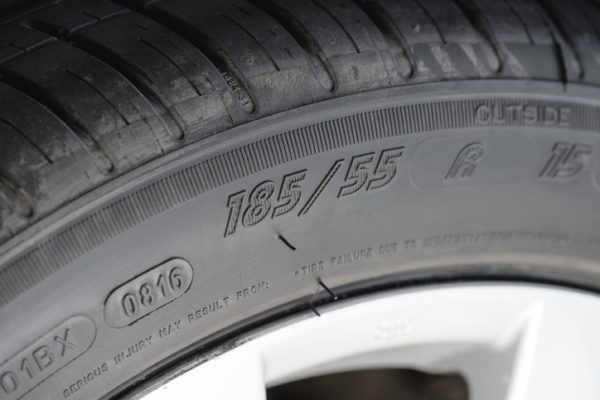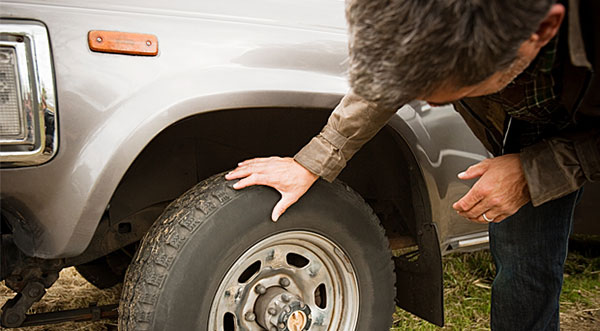This post was originally published on www.geico.com
They affect your car’s handling, ride, braking and safety. But most people don’t give much thought to them.
Eighty-three percent of drivers aren’t “tire smart” (i.e., they don’t know how to properly check tire pressure), according to a 2015 survey from the Rubber Manufacturers Association (RMA).
You may be thinking, Tires haven’t changed since I bought my first set. Wrong! Since they carry you and your car around on the road, taking proper care of them is one of the most important safety factors that also happens to be the most overlooked. Here, we deflate the top five tire myths to make sure you know your way around on four wheels.
Myth #1: All Cars Come With Spare Tires
This used to be standard, but not anymore. For space-saving reasons and fuel efficiency, approximately one in three new cars don’t come with a spare tire in the trunk. Instead, you’ll get a “temporary mobility kit” with a tire sealant and a tire inflator or run-flat tires, says Maryland-based master mechanic and automotive radio show host, Pat Goss. If your tire is punctured, apply the sealant through the valve stem then use the inflator to re-inflate it, he explains. The downside? If the damage is more severe than a tiny hole (think nail size), the mobility kit probably isn’t going to cut it and you’ll have to be towed (GEICO’s mobile app makes it a cinch to request emergency roadside assistance.). Go check your trunk now, so you’re not surprised in an emergency.
Myth #2: The Correct Tire Pressure Is Listed On The Tire Sidewall
 Half of all drivers believe this is where you should look to find out the ideal tire inflation pressure number. But these numbers actually tell you what size and kind of tire you have as well as the maximum cold inflation PSI the tire is rated for—not the recommended pressure for your vehicle. That information is actually listed on a label inside the vehicle’s driver-side door or in the owner’s manual.
Half of all drivers believe this is where you should look to find out the ideal tire inflation pressure number. But these numbers actually tell you what size and kind of tire you have as well as the maximum cold inflation PSI the tire is rated for—not the recommended pressure for your vehicle. That information is actually listed on a label inside the vehicle’s driver-side door or in the owner’s manual.
Myth #3: A Tire-Pressure Monitoring System (TPMS) Ensures That Your Tires Are Always Good To Go
A tire-pressure monitoring system electronically tracks and displays tire pressure via a gauge, pictogram display or a warning light on your vehicle’s dashboard. “These have lulled most drivers into believing that if the warning signal is off, everything is fine,” says Goss. Since a signal is only triggered when tires lose 25 percent of their inflation pressure (aka “dangerously low” tire pressure), you could be driving on tires that are underinflated enough to cause unnecessary wear, waste fuel and in some cases, decrease cornering ability while increasing stopping distances. Goss advises that you should check tire pressure every 30 days the old-fashioned way: manually, with a tire pressure gauge. (Need a refresher? Watch this quick how-to video on how to check your tire pressure.)
Myth #4: You Should Rotate Your Tires About Once A Year
 Not exactly. Tire rotation should be performed every 5,000 to 8,000 miles, which also coincides with the typical oil change recommendation. So the easiest way to ensure this happens is to get both done at the same time, says Goss. Another way to keep track? “Most cars today have dual trip meters, so you can set one trip meter to zero when the oil is changed or the tires are rotated and wait for it to reach the desired miles,” says Goss.
Not exactly. Tire rotation should be performed every 5,000 to 8,000 miles, which also coincides with the typical oil change recommendation. So the easiest way to ensure this happens is to get both done at the same time, says Goss. Another way to keep track? “Most cars today have dual trip meters, so you can set one trip meter to zero when the oil is changed or the tires are rotated and wait for it to reach the desired miles,” says Goss.
Myth #5: Never Continue Driving If You Experience A Flat
Run-flat tires—which let you keep driving after a puncture so you can make it to an auto shop—are becoming more popular. “Many manufacturers are using them because the additional cost of four run-flats is less than the cost of a spare tire, wheel and jack,” says Goss. Run-flats vary as to how far they can be driven and at what speed, but generally speaking they can be driven for up to 50 miles at a reduced speed (usually about 50 miles per hour), he explains. You can tell if your car has run-flats by looking inside the driver’s door, in your owner’s manual or checking the tire sidewall for one of the following codes: RFT, DSST, ROF, RFT, EMT, XRP, ZP or ZPS.
Have more tire questions? Here are 5 signs you need new tires.
Knowing your way around your tires is one thing, but being truly streetwise means having dependable insurance that won’t cost you an arm and a leg. Get a fast, free auto insurance quote from GEICO to see how much you could save.
By Nicole Cherie Jones
[ad_1]
